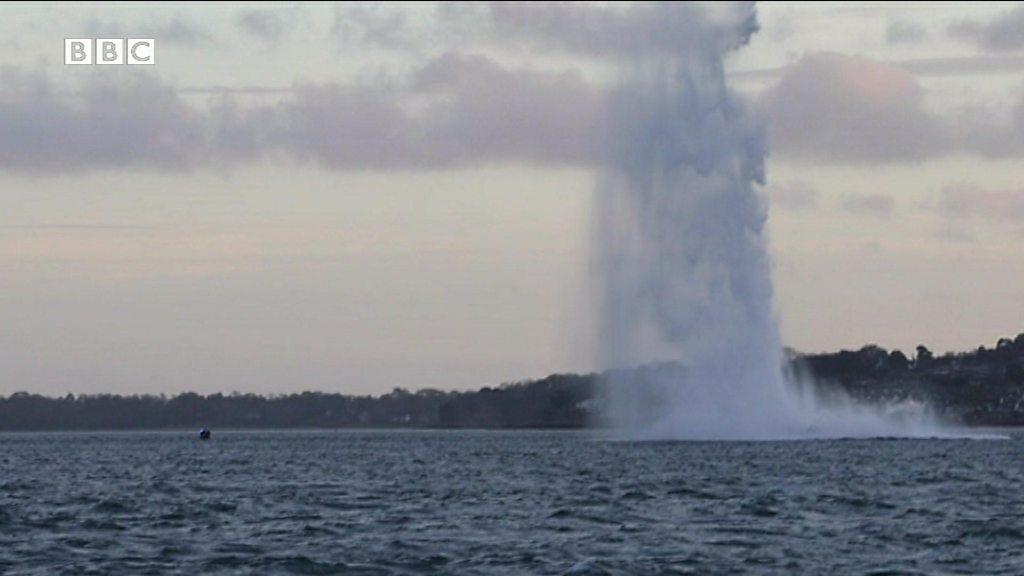Cannon, anchors and skull found during Portsmouth dredging
- Published
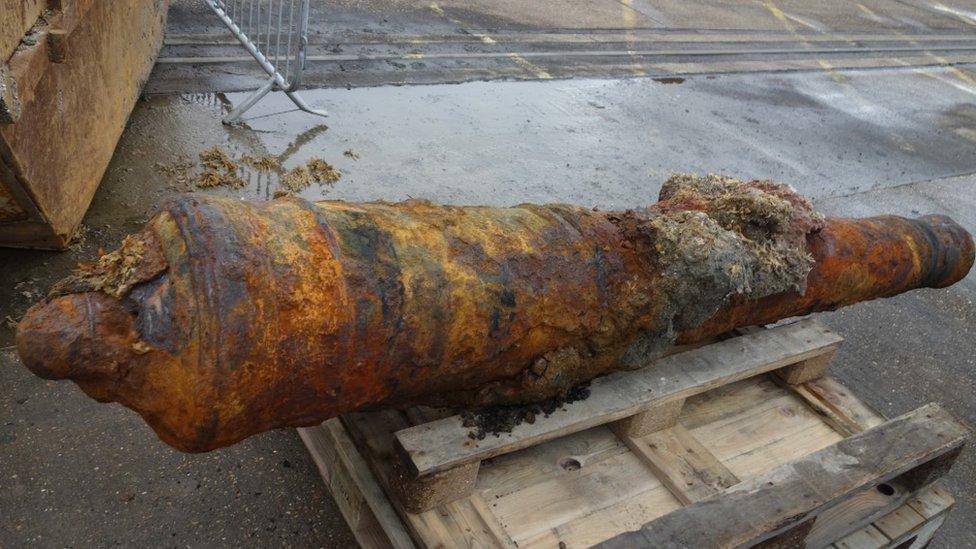
Eight cannon were found during the dredging work
More than 20,000 items ranging from a human skull to shoes and sea mines have been discovered during dredging work in Portsmouth Harbour.
The work has been carried out to deepen and widen a four-mile (7km) channel to allow the the navy's new 65,000-tonne aircraft carriers to dock.
It also uncovered eight cannon, an aircraft engine and 36 anchors.
A German sea mine and five bombs uncovered caused major disruption to the area while each was made safe.
The devices, found on the seabed, were towed out to sea and detonated by the Royal Navy's Explosive Ordnance Disposal team.
A total of 36 anchors were found during the work, along with a skull
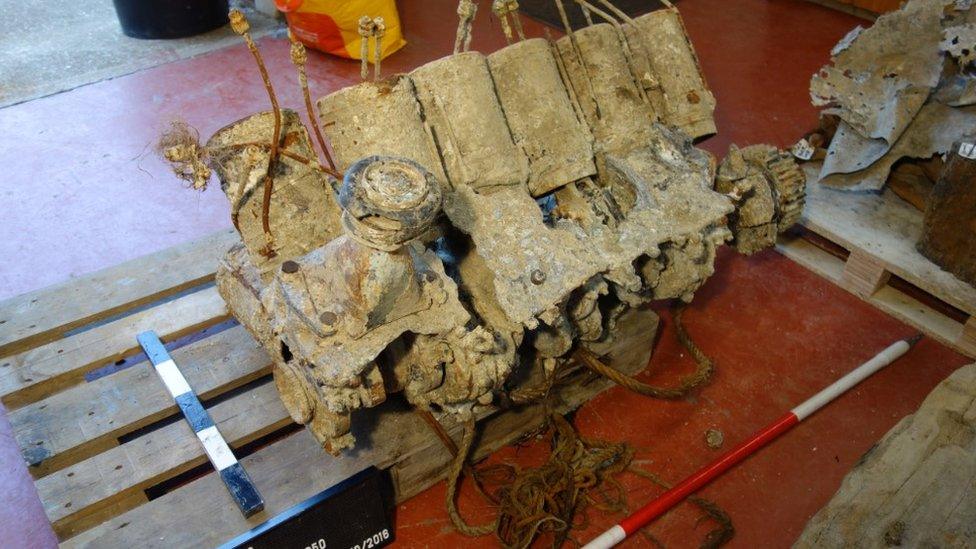
A military aircraft engine was among the finds
The human skull, which is thought to date back to the Napoleonic Wars, has been passed to police in Portsmouth.
Capt Iain Greenlees, who is in charge of the dredging project said: "There was a burial ground on one of the islands in the harbour and it was almost certainly washed away from there."
Other items included bottles, plates and ceramics - all of which have been passed to archaeologists at Wessex Archaeology for study.
The dredging, which started in September 2015, was carried out to allow HMS Queen Elizabeth - due to arrive later this year - and its sister ship, Prince of Wales, to be based at Portsmouth Naval Base.
The MoD said specialist dredging vessels have removed 3,200,000 cubic metres of sediment - the equivalent to 1,280 Olympic swimming pools.
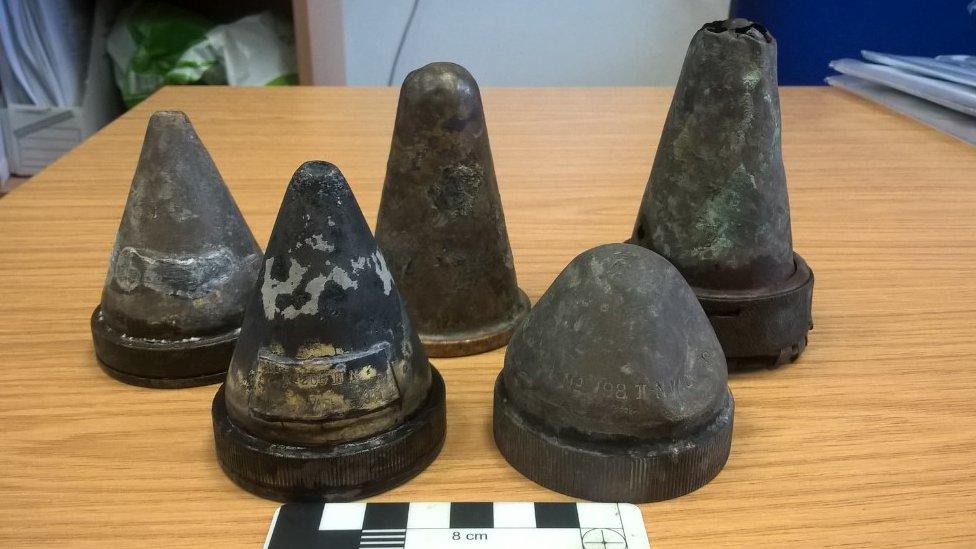
A number of WW2 fuse caps were also found

Clay pipe fragments have been passed to archaeologists to study
- Published13 March 2017

- Published22 February 2017
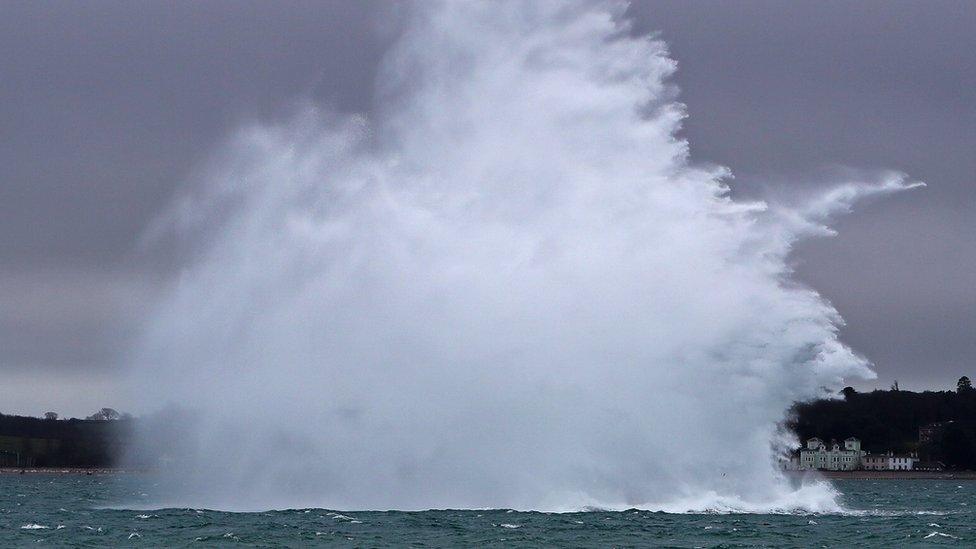
- Published22 February 2017
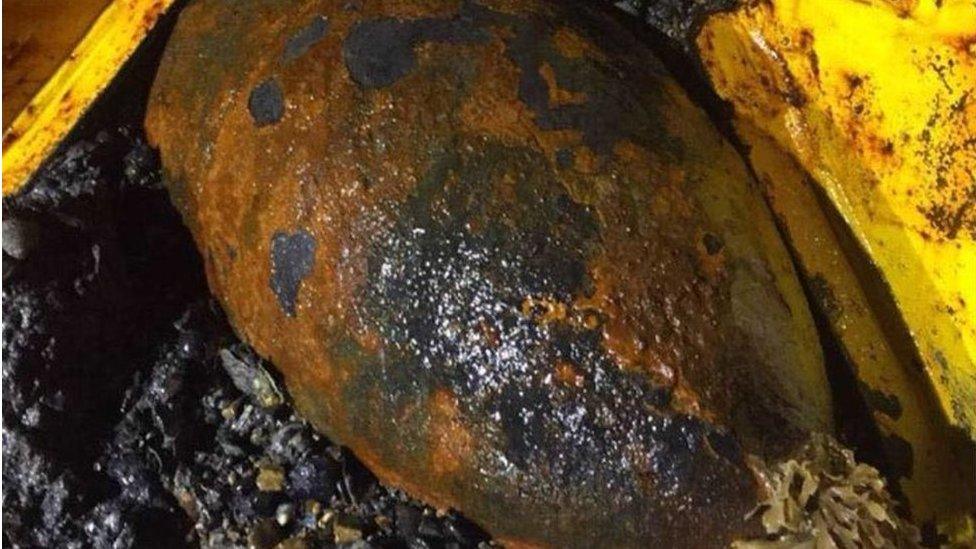
- Published16 November 2016

- Published16 November 2016
